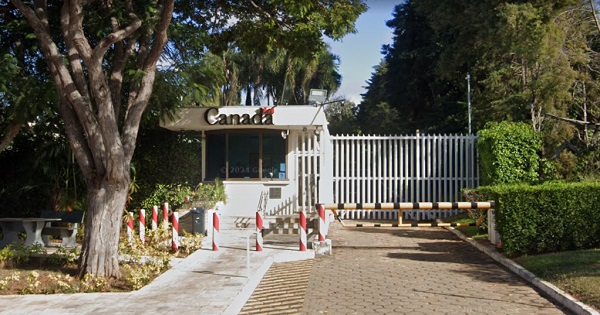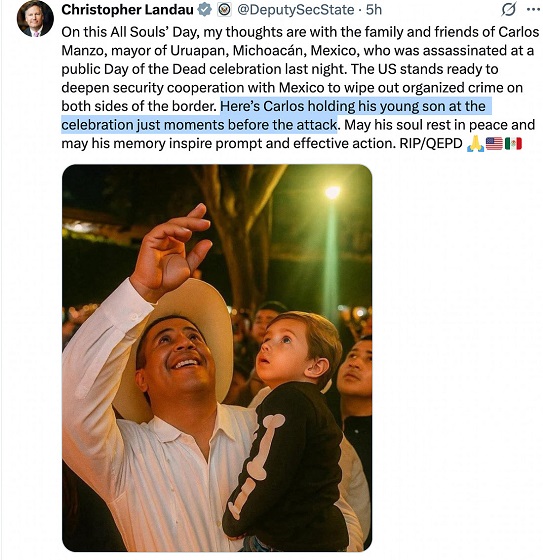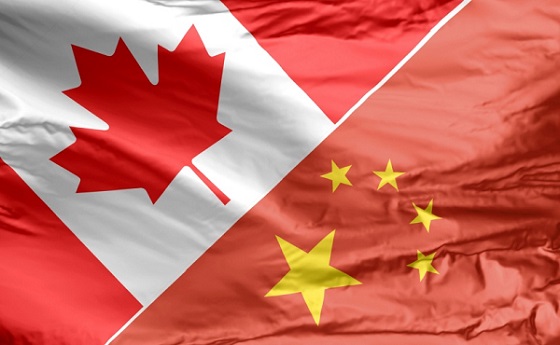Uncategorized
White House defends Trump on Puerto Rico death toll claim

WASHINGTON — As Hurricane Florence bore down on the U.S., President Donald Trump angrily churned up the devastating storm of a year earlier, disputing the official death count from Hurricane Maria and falsely accusing Democrats of inflating the Puerto Rican toll to make him “look as bad as possible.”
Public health experts have estimated that nearly 3,000 perished because of the effects of Maria. But Trump, whose efforts to help the island territory recover have been persistently criticized, was having none of that Thursday. He said just six to 18 people had been reported dead when he visited two weeks after the storm and suggested that many had been added later “if a person died for any reason, like old age.”
Trump’s jarring comments, coming as the East Coast braced for the massive storm, which later made landfall early Friday in North Carolina, offered fresh evidence of his resistance to criticism and his insistence on viewing large and small events through the prism of his own success or failure.
Offering up a fresh conspiracy theory, he said of the Puerto Rico count, “This was done by the Democrats in order to make me look as bad as possible when I was successfully raising Billions of Dollars to help rebuild Puerto Rico.”
Even some Republicans suggested the president had gone too far.
“Casualties don’t make a person look bad,” House Speaker Paul Ryan said, breaking with the president. “So I have no reason to dispute those numbers.”
Sen. Lindsey Graham of South Carolina, who talks to Trump often, said, “I don’t think it’s bad to say we could have done better in Puerto Rico.” He also said he thought Trump “sees every attack on him as sort of undercutting his legitimacy.”
Especially upset were GOP politicians in Florida, a state with a substantial Puerto Rican population.
Gov. Rick Scott, who is running for the U.S. Senate, tweeted: “I’ve been to Puerto Rico 7 times & saw devastation firsthand. The loss of any life is tragic.” A spokesman for former U.S. Rep. Ron DeSantis, who won the Florida GOP primary for governor with Trump’s support, said he did not agree with Trump’s tweets.
The White House defended the president.
“As the President said, every death from Hurricane Maria is a horror. Before, during, and after the two massive hurricanes, the President directed the entire Administration to provide unprecedented support to Puerto Rico,” White House spokesman Hogan Gidley said. “President Trump was responding to the liberal media and the San Juan Mayor who sadly, have tried to exploit the devastation by pushing out a constant stream of misinformation and false accusations.”
Gidley cited studies that attributed fewer than 3,000 deaths on the island to Maria.
Throughout his presidency, Trump has struggled to publicly express empathy at times of national crises, sparking outrage during his post-Maria visit when he feuded with San Juan Mayor Carmen Yulin Cruz and tossed out paper towels to victims like he was shooting baskets. In recent days, Trump publicly lauded his own administration’s response to Maria and privately groused over storm-related news coverage that he saw as overly focused on Puerto Rico, according to two Republican advisers close to the White House who weren’t authorized to speak publicly.
Puerto Rico’s governor last month raised Maria’s official death toll from 64 to 2,975 after an independent study found that the number of people who succumbed in the sweltering aftermath had been severely undercounted. Trump dismissed the findings Thursday, tweeting: “If a person died for any reason, like old age, just add them onto the list.”
In fact, there are two categories of disaster deaths. “Direct” deaths include such fatalities as drownings in a storm surge or being crushed in a wind-toppled building. “Indirect” deaths are harder to count because they can include such things as heart attacks, electrocutions from downed power lines and failure to receive dialysis because the power is out — and those kinds of fatalities can happen after a storm has ended but while an area is struggling to restore electricity, clean water and other health and safety services.
When Trump visited in October 2017, two weeks after the storm hit, the death toll at the time was indeed 16 people. The number was later raised to 64, but the government then commissioned an independent study to determine how many died because of post-storm conditions. That study — conducted by the Milken Institute School of Public Health at George Washington University — estimated 2,975 deaths.
Dr. Carlos Santos-Burgoa — the lead researcher on the study and a well-known expert in global health, particularly Latin America — told The Associated Press that the initial figure of 64 deaths reflected only people whose death certificates cited the storm. He said the latest figure was more accurate and stressed that every death in the six months following the storm was not attributed to the hurricane.
“We are scientists. We are public health people. We are committed to the health of the population. We try to reach the truth, and we try to understand what is damaging the people in order to prevent disease,” he said.
Puerto Rico’s government is run by the New Progressive party, a pro-statehood, Puerto Rico-only party. Gov. Ricardo Rossello told CBS New York on Thursday that he was a Democrat but stressed that the government sought the study and said it “tried to make this process a completely independent process.”
State and local officials are responsible for establishing death tolls, not the federal government. After the total was revised Aug. 28, White House spokeswoman Sarah Huckabee Sanders issued a statement in which she did not actively dispute the revised figure.
Trump’s fresh anger drew swift rebukes from elected officials and residents of the island, where blackouts remain common, 60,000 homes still have makeshift roofs and 13
Cruz, the Democratic San Juan mayor who has sparred with the president, tweeted: “Trump is so vain he thinks this is about him. NO IT IS NOT.” Rep. Luis Gutierrez, an Illinois Democrat who spent part of his youth in Puerto Rico, spoke on the House floor in front of a printout of the Puerto Rican flag, saying Trump is “delusional” and incapable of “empathy or basic human decency.”
Rep. Elijah E. Cummings, ranking Democrat on the House Committee on Oversight and Government Reform, sent a letter to the GOP majority Thursday calling for the panel to request documents from the White House relating to the Puerto Rico response.
Trump maintained as recently as Tuesday that his response to the storm was an “incredible unsung success.”
___
Associated Press reporters Colleen Long, Lauran Neergaard and Alan Fram in Washington, Danica Coto in San Juan, Puerto Rico, Michael Weissenstein in Havana, Cuba, and Jennifer Peltz in New York contributed to this report.
Catherine Lucey, Zeke Miller And Jonathan Lemire, The Associated Press
Uncategorized
Trump Admin Establishing Council To Make Buildings Beautiful Again


From the Daily Caller News Foundation
By Jason Hopkins
The Trump administration is creating a first-of-its-kind task force aimed at ushering in a new “Golden Age” of beautiful infrastructure across the U.S.
The Department of Transportation (DOT) will announce the establishment of the Beautifying Transportation Infrastructure Council (BTIC) on Thursday, the Daily Caller News Foundation exclusively learned. The BTIC seeks to advise Transportation Secretary Sean Duffy on design and policy ideas for key infrastructure projects, including highways, bridges and transit hubs.
“What happened to our country’s proud tradition of building great, big, beautiful things?” Duffy said in a statement shared with the DCNF. “It’s time the design for America’s latest infrastructure projects reflects our nation’s strength, pride, and promise.”
“We’re engaging the best and brightest minds in architectural design and engineering to make beautiful structures that move you and bring about a new Golden Age of Transportation,” Duffy continued.
Mini scoop – here is the DOT’s rollout of its Beautifying Transportation Infrastructure Council, which will be tasked with making our buildings beautiful again. pic.twitter.com/
9iV2xSxdJM — Jason Hopkins (@jasonhopkinsdc) October 23, 2025
The DOT is encouraging nominations of the country’s best architects, urban planners, artists and others to serve on the council, according to the department. While ensuring that efficiency and safety remain a top priority, the BTIC will provide guidance on projects that “enhance” public areas and develop aesthetic performance metrics.
The new council aligns with an executive order signed by President Donald Trump in August 2025 regarding infrastructure. The “Making Federal Architecture Beautiful Again” order calls for federal public buildings in the country to “respect regional architectural heritage” and aims to prevent federal construction projects from using modernist and brutalist architecture styles, instead returning to a classical style.
“The Founders, in line with great societies before them, attached great importance to Federal civic architecture,” Trump’s order stated. “They wanted America’s public buildings to inspire the American people and encourage civic virtue.”
“President George Washington and Secretary of State Thomas Jefferson consciously modeled the most important buildings in Washington, D.C., on the classical architecture of ancient Athens and Rome,” the order continued. “Because of their proven ability to meet these requirements, classical and traditional architecture are preferred modes of architectural design.”
The DOT invested millions in major infrastructure projects since Trump’s return to the White House. Duffy announced in August a $43 million transformation initiative of the New York Penn Station in New York City and in September unveiledmajor progress in the rehabilitation and modernization of Washington Union Station in Washington, D.C.
The BTIC will comprise up to 11 members who will serve two-year terms, with the chance to be reappointed, according to the DOT. The task force will meet biannually. The deadline for nominations will end Nov. 21.
Uncategorized
New report warns WHO health rules erode Canada’s democracy and Charter rights

The Justice Centre for Constitutional Freedoms has released a new report titled Canada’s Surrender of Sovereignty: New WHO health regulations undermine Canadian democracy and Charter freedoms. Authored by Nigel Hannaford, a veteran journalist and researcher, the report warns that Canada’s acceptance of the World Health Organization’s (WHO) revised International Health Regulations (IHR) represents a serious erosion of national independence and democratic accountability.
The IHR amendments, which took effect on September 19, 2025, authorize the WHO Director-General to declare global “health emergencies” that could require Canada to follow directives from bureaucrats in Geneva, bypassing the House of Commons and the will of Canadian voters.
The WHO regards these regulations as “binding,” despite having no ability or legal authority to impose such regulations. Even so, Canada is opting to accept the regulations as binding.
By accepting the WHO’s revised IHR, the report explains, Canada has relinquished its own control over future health crises and instead has agreed to let the WHO determine when a “pandemic emergency” exists and what Canada must do to respond to it, after which Canada must report back to the WHO.
In fact, under these International Health Regulations, the WHO could demand countries like Canada impose stringent freedom-violating health policies, such as lockdowns, vaccine mandates, or travel restrictions without debate, evidence review, or public accountability, the report explains.
Once the WHO declares a “Pandemic Emergency,” member states are obligated to implement such emergency measures “without delay” for a minimum of three months.
Importantly, following these WHO directives would undermine government accountability as politicians may hide behind international “commitments” to justify their actions as “simply following international rules,” the report warns.
Canada should instead withdraw from the revised IHR, following the example of countries like Germany, Austria, Italy, Czech Republic, and the United States. The report recommends continued international cooperation without surrendering control over domestic health policies.
Constitutional lawyer Allison Pejovic said, “[b]y treating WHO edicts as binding, the federal government has effectively placed Canadian sovereignty on loan to an unelected international body.”
“Such directives, if enforced, would likely violate Canadians’ Charter rights and freedoms,” she added.
Mr. Hannaford agreed, saying, “Canada’s health policies must be made in Canada. No free and democratic nation should outsource its emergency powers to unelected bureaucrats in Geneva.”
The Justice Centre urges Canadians to contact their Members of Parliament and demand they support withdrawing from the revised IHR to restore Canadian sovereignty and reject blind compliance with WHO directives.
-

 Business1 day ago
Business1 day agoYou Won’t Believe What Canada’s Embassy in Brazil Has Been Up To
-

 Censorship Industrial Complex1 day ago
Censorship Industrial Complex1 day agoSenate Grills Meta and Google Over Biden Administration’s Role in COVID-Era Content Censorship
-

 Business1 day ago
Business1 day agoMystery cloaks Doug Ford’s funding of media through Ontario advertising subsidy
-

 Environment1 day ago
Environment1 day agoThe era of Climate Change Alarmism is over
-

 Automotive1 day ago
Automotive1 day agoCarney’s Budget Risks Another Costly EV Bet
-

 Crime18 hours ago
Crime18 hours agoPublic Execution of Anti-Cartel Mayor in Michoacán Prompts U.S. Offer to Intervene Against Cartels
-

 Aristotle Foundation18 hours ago
Aristotle Foundation18 hours agoB.C. government laid groundwork for turning private property into Aboriginal land
-

 Justice17 hours ago
Justice17 hours agoA Justice System That Hates Punishment Can’t Protect the Innocent









